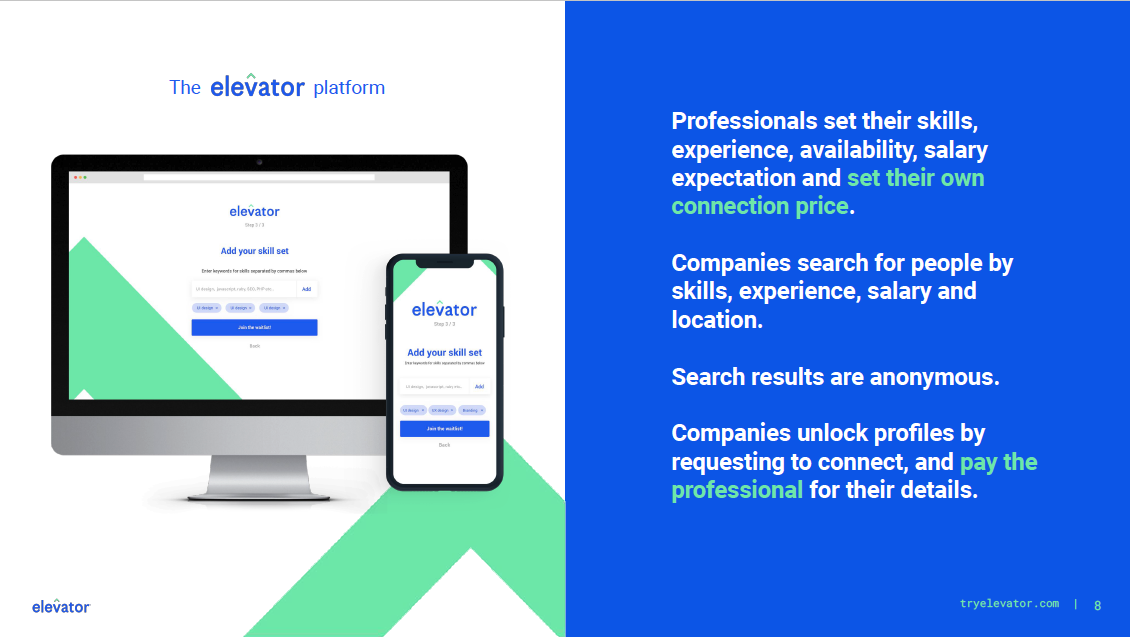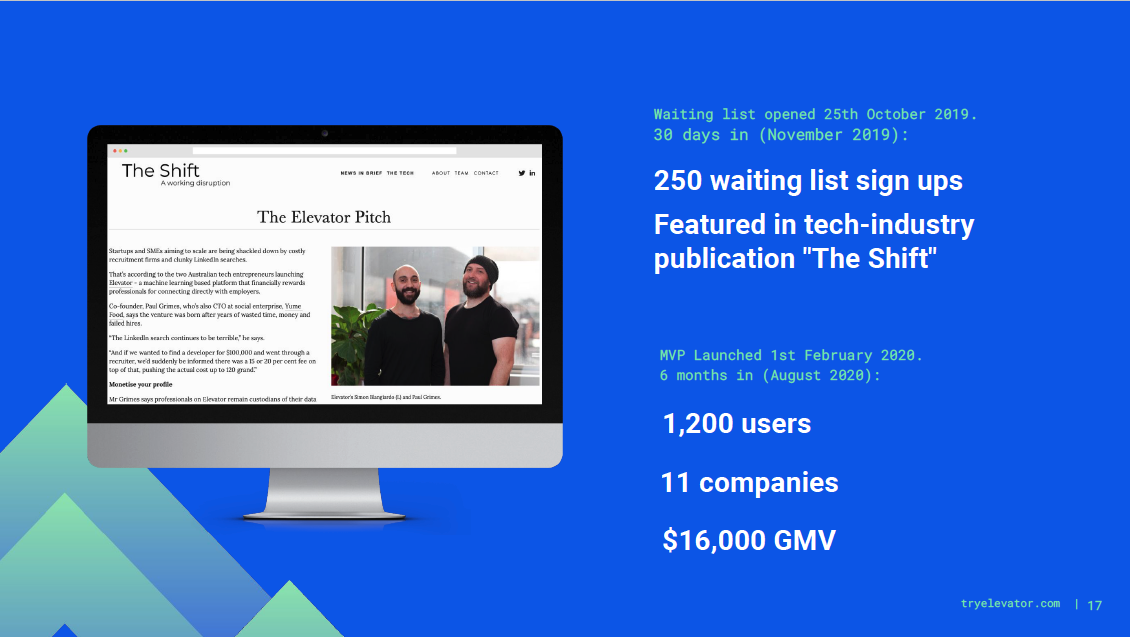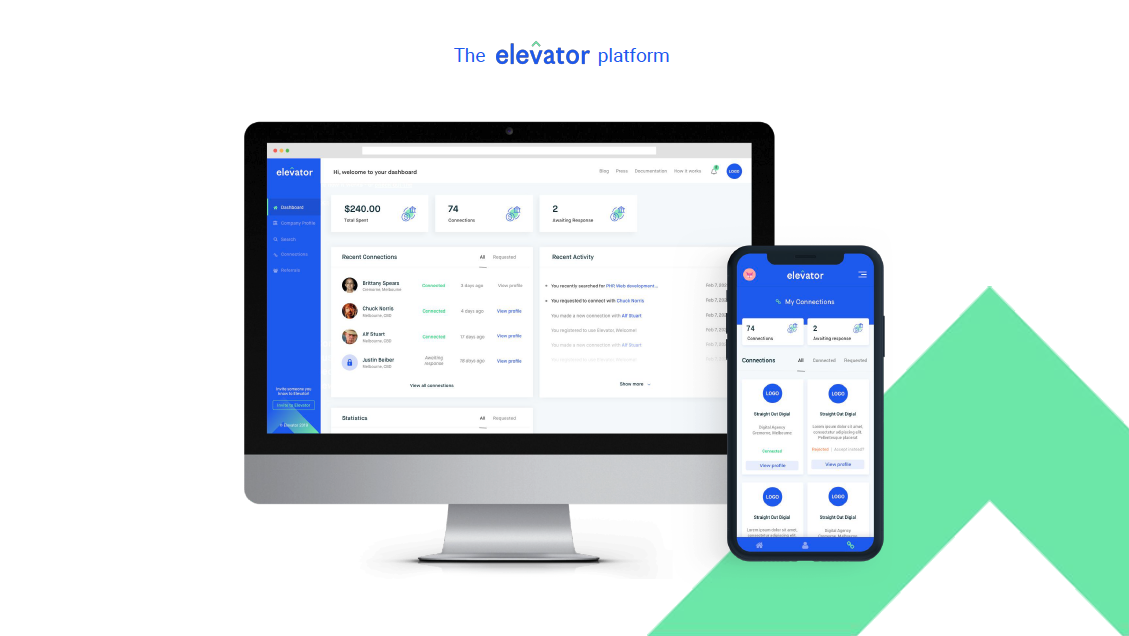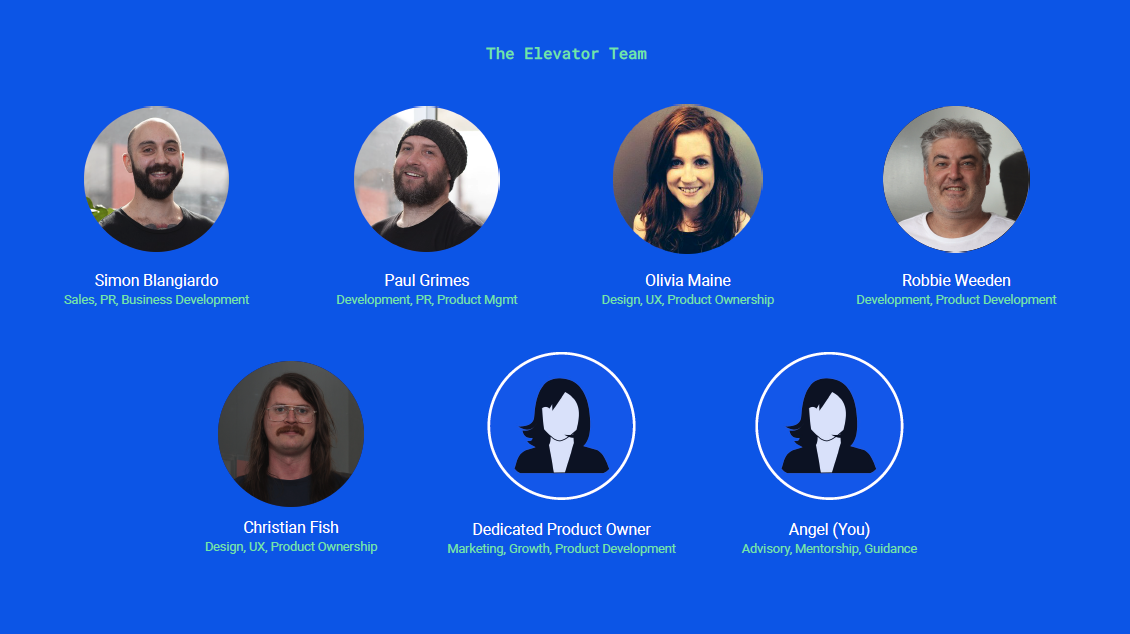Welcome to our new, regular column, The Pitch Doctor, with Cheryl Mack, Head of Community at Stone & Chalk.
When Mack appeared on the Startup Daily show recently on ausbiz, we asked her to name the best pitch deck she’d seen. She only half-jokingly replied “Fyre Festival”.
You can read what she had to say about it here.
If you’d like The Pitch Doctor to analyse a pitch deck, please send it to startupdaily[at]pinstripemedia.com.au and we’ll get the doc to examine it and share her diagnosis here.
Today the pitch deck comes from Paul Grimes, co-founder of Elevator, a small, currently bootstrapped Melbourne-based startup that launched in Feb 2020.
Here’s the doc’s diagnosis:
Meet “Elevator”
Their slogan? “Connecting businesses and people in a brand new way”
A bold statement that I found on slide two of the investor pitch deck I’ll be reviewing and providing feedback on for this edition of the Pitch Doctor.
Investors often tell me they are looking for something unique, something that will completely change the way people or an industry works. These are the concepts that when you first hear it you either think “that’s almost too obvious, why hasn’t it been done?” OR “that’ll never work”.
Elevator is a unique business model that aims to disrupt the corporate recruiting market. Let’s see how well they sell their idea!
What worked
Starting with a bold intriguing statement: To get investors interested in a meeting with you, it’s important to get them interested! Having something on the first couple slides that captures the attention and makes the reader want to continue is a great tactic.

Explaining in simple human terms exactly how it works: I love when I read a ‘How it Works’ slide that just makes sense. There’s no buzz or fluffy words that try to enhance but only end up confusing things. Just a couple of sentences explaining the concept as if you were talking to mum or dad.

Clear traction slide: Traction is king these days, so being clear and upfront with the traction you’ve achieved so far, helps investors understand the market need you’re addressing and where you are in your journey.

Areas to improve
Don’t turn your investor deck into a customer pitch deck: If you’re talking about the problem statements, avoid the temptation to list benefits or salesy statements. Remember who you’re talking to and stick to that audience. A more prosaic and forensic approach will carry weight with investors.

Quantify the problem: On this slide (The Problem) I would also mention that the problem isn’t quantified enough, you haven’t answered the question, why is this a huge problem that’s worth solving?
For example, it’s not enough just to say “Companies are missing out on prospective hires due to recruiters fees.” What quantifiable pain is that causing them? Is it costing them $X per year?
Product screenshots alone are not enough: A product slide that shows the product and screenshots is great to have. But you also need to provide more context. What are the features? Who will use it? What’s your USP (Unique Selling Proposition)? How much of this is built so far?

Sell the team. Why you? There was a mention of team capability on slide 14, mixed in with statements around product traction and a vague USP “First-in-class service offering”. Then a Team slide later on, but it doesn’t hit the mark in terms of convincing investors that they are the right people to win in this space.


Investors will often ask “What is your unique insight in this space that gives you a competitive advantage?” That could be addressed a lot better here.
Make sure you address WHY when it comes to the market opportunity: The deck touched on the market size of the recruitment industry as a whole, which is a good start. Then it went on to make two statements without providing evidence to back them up.
We believe Elevator can meaningfully disintermediate the recruitment industry in the startup / SME demographic.
If Elevator changed 1% of the behaviour of how companies connect with future employees, an addressable market emerges.
Why?
I would love to see a slide following those statements showing why they think they can ‘meaningfully disintermediate the recruitment industry’. What’s the gap you’ve identified? Where are the stats on why it needs to be disintermediated?
Why do you think you can change 1% of behaviour? Why does it need to change? Do they want to change their behaviour? And if so how?
Diagnosis
Overall, this investor pitch deck was very practical and articulate. As someone who’s read a lot of high-flying vision decks, splattered with fluffy buzzwords and zero concrete details, this was a refreshing change.
However, I would say it went a little too far in that direction. Although it touches on many of the key things investors like to know, it’s missing the je ne sais quoi of communicating the big opportunity.
I love founders and companies who are trying to radically change the way we do something. This is where miracles of innovation happen.
Unfortunately, in this instance, I wasn’t left feeling excited and wanting to know more, and I wasn’t left thinking, “Wow, if anyone can pull that off, it’s those founder(s)”.
There are two big questions that I think needed to be answered, in order to make it compelling.
- Why would a company want to pay just to ‘connect’ with (ie. get the details of) a professional? What’s the benefit or cost savings for them?
- Why would a professional want to get paid for being connected with? How much will they get? Will it be worth it for them?
This has the makings of a really strong pitch deck – the fundamentals are sound, the specifics are there and the ideas are concrete and mostly well-articulated. Taking things to the next level just means selling the team and their vision, and answering the few unanswered questions.
I’d like to thank the Elevator team for having the courage to share their deck with us. If you’d like The Pitch Doctor to look at your deck, please email [email protected]
- For everything you need to know about raising capital as a startup founder, check out Stone & Chalk’s Capital Raising Guide.



















Trending
Daily startup news and insights, delivered to your inbox.